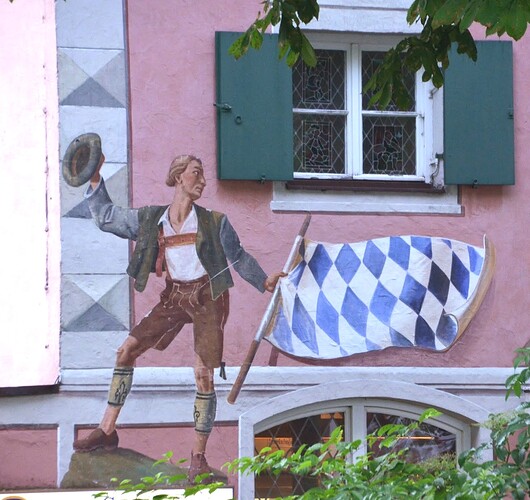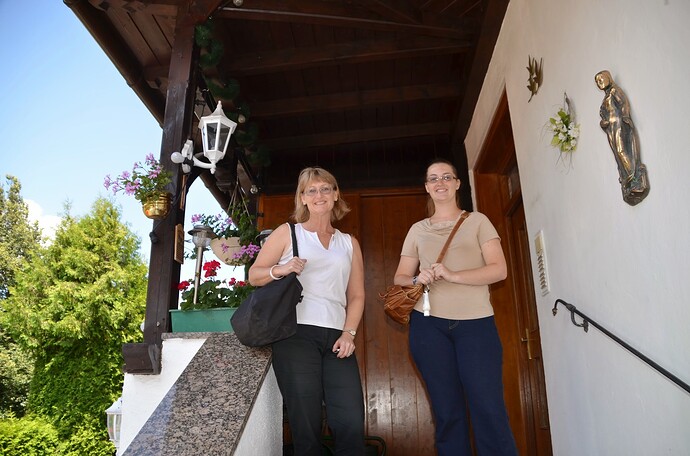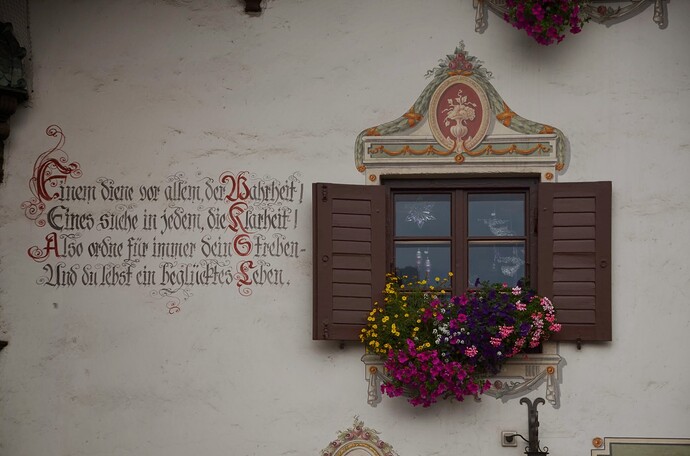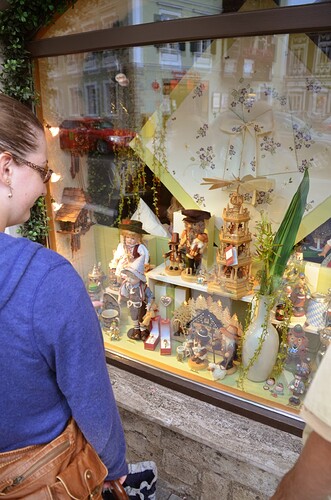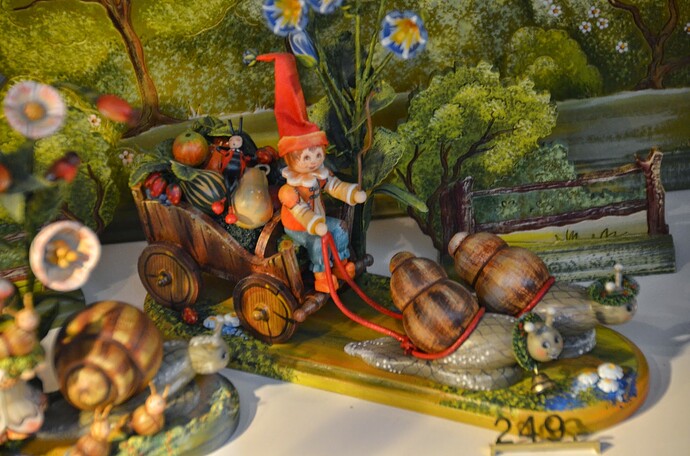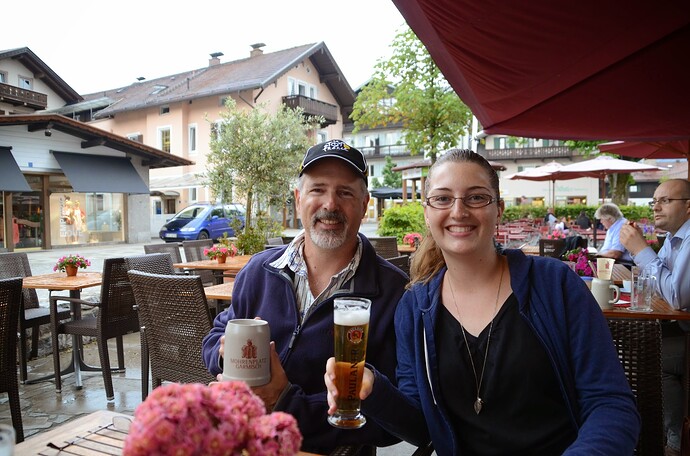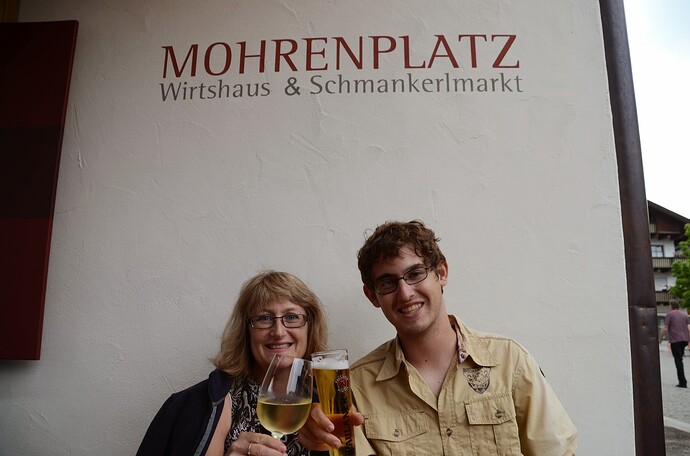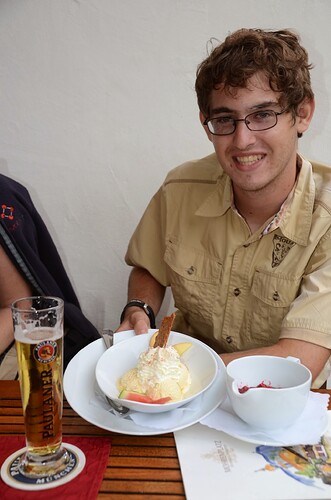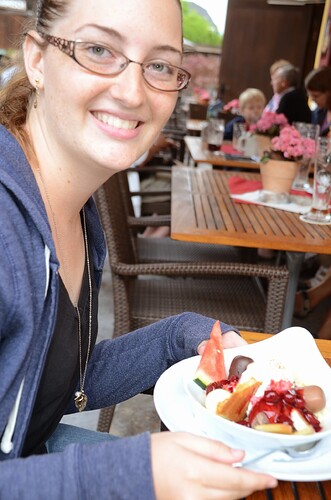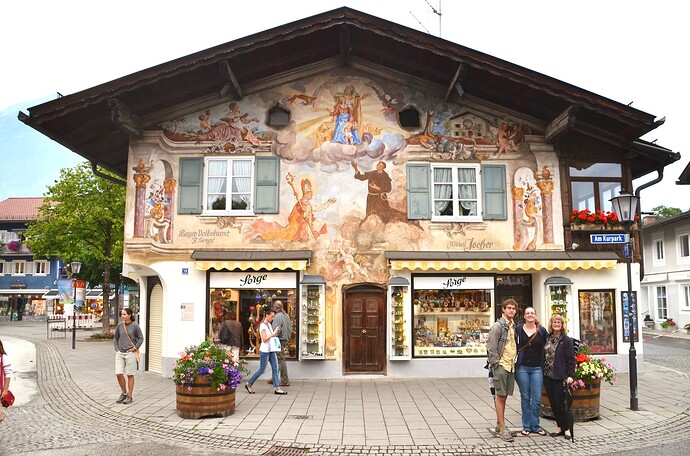My college friend Andy once recommended Garmisch-Partenkirchen as the top European destination. Trusting his advice, we chose it for our honeymoon in 1990. Andy’s suggestion was spot on.
After a full day at the Lourve in Paris, we took the overnight train to Garmisch-Partenkirchen. The trip is about 8 hours. We got a family room on the train, visited the dining car, read books, sorted photos, and slept a bit. Getting into Garmisch, we checked into the Mirabell Guest House where we took a nap, did laundry, got organized for the day, and finally ventured out to explore the town.
Overnight trains are awesome. You wake up in a new town, often a new country, ready to hit the ground running. We splurged a bit by upgrading to a sleeper car or a family room, and the price is offset by not having to pay for a hotel room. Of course, the view from a train is unique.
Checking in to the Mirabell Guest House.
1930 AEG electric locomotive (factory number 4269, and signed No. 2 during use on the Bavarian Zugspitze Railway),
The Zugspitzbahn runs from Garmisch-Partenkirchen to Zugspitzplatt, a distance of 19.0 km. The track gauge is 1,000 mm and the electrification system is 1,500 V D.C. overhead line. The lower section from Garmisch to Eibsee is operated as an adhesion railway with rack assistance (i.e. using a cog-wheel system) from Grainau to Eibsee. The section above Eibsee is operated as rack only using the Riggenbach system. Passengers travelling the whole line from Garmisch to Zugspitzplatt stay on the same train.[Wikpedia]
The terrain is so steep that traditional steel wheels on a steel track slip and lose traction. The Riggenbach system is similar in design to the Marsh system. It uses large gear and a ladder rack, formed of steel plates or channels connected by round or square rods at regular intervals.
German translation anyone?
The window displays are simply captivating
The German attention to detail is amazing. I’m thinking when you pull with two snails it goes twice as fast!
The 1936 Winter Olympics, officially known as the IV Olympic Winter Games, were held in Garmisch-Partenkirchen, Bavaria, Germany. The games took place from February 6 to 16, 1936. This was the first time the Winter Olympics were held in the same year as the Summer Olympics, a tradition that continued until the 1992 Games.
The 1936 Winter Olympics were notable for several reasons. They were the first to be broadcast on television, with stations in Berlin and the surrounding area broadcasting the events live. The games were also the first to feature Alpine skiing events, which included both men’s and women’s combined, an event that included both downhill and slalom races.
The games were held under the shadow of Nazi Germany’s growing political and military ambitions, and they were used by Adolf Hitler’s regime as a tool for propaganda. Despite this, the games were a sporting success, with Norway leading the medal count with a total of 15 medals, seven of which were gold.
The 1936 Winter Olympics were the last to be held before World War II, with the games scheduled for 1940 and 1944 being canceled due to the war. The Winter Olympics did not resume until 1948, when they were held in St. Moritz, Switzerland.
We enjoyed the local beverage of choice but with all the walking and activity did not put on a pound.
With our short tour of town complete, that is it for today.
Tomorrow we go tobogganing…on a glacier…in July. Stay tuned!
